- Data Basin |
- Datasets |
- Forest Interior
Forest Interior
Aug 19, 2015
(Last modified Aug 20, 2015)
Uploaded by
Rensselaer Plateau Alliance
- Description:
- Comprehensive map of forest-interior areas for the Rensselaer Plateau using an average concept of forest-interior habitat, especially focusing on regionally-important examples. Forest-interior habitat is among the places of the highest ecological integrity within a region, especially for terrestrial biodiversity features. A forest-interior area is roughly defined as an area of essentially 100% natural climax/disclimax communities, ideally mostly forest, that is both essentially exclusively comprised of an assemblage of native forest plants and animals and sufficiently buffered from significant cultural impacts. This datalayer is for one of 5 forest-interior models, representing a Moderate Model that simulates commonly-used concepts of forest-interior areas, thus applying intermediate buffer size plus disturbance type and size thresholds to qualify as forest-interior disturbances. The full set of regionally-important Moderate Model forest-interior areas across the plateau is thought to be necessary to sustain the integrity of the region as a forest landscape, specifically contributing to the support and continuity of common forest biodiversity and large-scale forest processes. The derivation of regionally-important forest-interior areas for the plateau represents one of two parts of a forest integrity model for the region that also includes associated forest corridors which connect forest-interior areas across the plateau landscape, forming an essentially contiguous regional network of forests that provides key characteristics of forest landscapes such as high ecological integrity, ecological resilience, plus important habitat and travel routes for resident native forest biota. This network is especially important for viable populations of denning large mammals and nesting forest birds, both of which are currently present on the plateau and modelled to require about 5,000 to 120,000 acres of suitable habitat.
- Data Provided By:
-
Rensselaer
Plateau Ecological Features Working Group (David M. Hunt, Ecological Intuition
& Medicine, with review by Nick Conrad, Rensselaer Land Trust and New York
Natural Heritage Program, plus Rachel Riemann, U.S. Forest Service).
Delineation Modelling: David M. Hunt, Ecological Intuition & Medicine, and Rachel Riemann, U.S. Forest Service.
Attribute Population: David M. Hunt, Ecological Intuition & Medicine.
- Content date:
- Based primarily on 2004 aerial photograph and 2012 road patterns. likely to have an accuracy of 90% or more in shape, size and regional importance for 5 to 25 years (past to future), averaging an estimate of about 10 years past and future. a mid-term ecological feature sometimes strongly altered by individual land use (e.g., forest clearing, forest recovery, road extent, road class), both in terms of the presence of forest/roads and the forest and road boundaries, and subject to fairly rapid temporal changes. See the Rensselaer Plateau Ecology Report, Ecological Communities, Sections NC4-2 and NC11-3 and/or Forest Interior Section FI7-2 and FI9-3 for more details.
- Citation:
- Hunt, David M. 2013. Regionally-Important Forest-Interior Areas for the Rensselaer Plateau, Moderate Model. ArcGIS datalayer. prepared for the Rensselaer Plateau Alliance and New York State Department of Environmental Conservation Hudson River Estuary Program. Ecological Intuition & Medicine.
- Spatial Resolution:
- About 1:8000 scale based on component natural communities, both for forest communities and disturbance communities
- Contact Organization:
- Rensselaer Plateau Alliance (RPA), http://www.rensselaerplateau.org. For technical information, contact: Rachel Riemann (rriemann17 @ hotmail.com); For content questions, contact David Hunt (518-279-4124)
- Contact Person(s):
- Use Constraints:
 This work is licensed under a Creative Commons Attribution 3.0 License.
This work is licensed under a Creative Commons Attribution 3.0 License.
- Layer:
- Layer Type:
- Currently Visible Layer:
- All Layer Options:
- Layers in this dataset are based on combinations of the following options. You may choose from these options to select a specific layer on the map page.
- Description:
- Spatial Resolution:
- Credits:
- Citation:
- Purpose:
- Methods:
- References:
- Other Information:
- Time Period:
- Layer Accuracy:
- Attribute Accuracy:
FGDC Standard Metadata XML
Click here to see the full FGDC XML file that was created in Data Basin for this layer.
Original Metadata XML
Click here to see the full XML file that was originally uploaded with this layer.
This dataset is visible to everyone
- Dataset Type:
-
Layer Package
Downloaded by
5 Members
Included in
1 Public Map
Included in
1 Public Gallery
About the Uploader

Rensselaer Plateau Alliance
Environmental Non-Profit
The Rensselaer Plateau Alliance (RPA), established in 2008, is a diverse group of organizations and people who want to conserve and protect the forested character of the Rensselaer Plateau and the many economic and environmental benefits it provides. A grassroots organization, the RPA is people...


